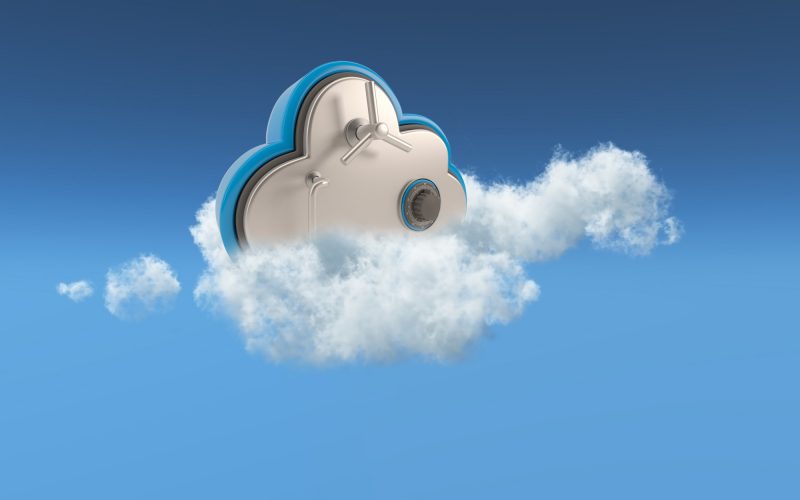With the growing popularity of the cloud, more and more companies are turning to it for their production sites. But what about cloud-based disaster recovery? Does it offer the same kind of benefits? As disaster recovery can be complex, time-consuming and very expensive, it pays to plan ahead to figure out just what your business needs. Ahead are four big benefits to cloud-based disaster recovery.
As an integral part of business continuity plan development creating an IT disaster recovery plan is essential to keep businesses running as they increasingly rely on IT infrastructure (networks, servers, systems, databases, devices, connectivity, power, etc.) to collect, process and store mission-critical data. A disaster recovery plan is designed to restore IT operations at an alternate site after a major system disruption with long-term effects. After successfully transferring systems, the goal is to restore, recover, test affected systems and put them back in operation. Your IT infrastructure is, in most cases, the lifeblood of your organization. When websites are down or patient data is unavailable due to hacking, natural disasters, hardware failure or human error, businesses cannot survive.
According to FEMA, a recovery strategy should be developed for each component:
• The physical environment in which data/servers are stored – data centers equipped with climate control, fire suppression systems, alarm systems, authorization, and access security, etc.
• Hardware – Networks, servers, devices, and peripherals.
• Connectivity – Fiber, cable, wireless, etc.
• Software applications – Email, data exchange, project management, electronic healthcare record systems, etc.
• Data and restoration Identify the critical software applications and data, as well as the hardware required to run them. Additionally, determining your company’s custom recovery point and time objectives can prepare you for recovery success by creating guidelines around when data must be recovered.
Recovery Point and Time Objectives Recovery Point Objective (RPO)
A recovery point objective (RPO) specifies a point in time that data must be recovered and backed up in order for business operations to resume. The RPO determines the minimum frequency at which interval backups need to occur, from every hour to every 5 minutes.
Recovery Time Objective (RTO) The recovery time objective (RTO) refers to the maximum length of time a system (or computer, network or application) can be down after a failure or disaster before the company is negatively impacted by the downtime. Determining the amount of lost revenue per amount of lost time can help determine which applications and systems are critical to business sustainability. For example, if your email server was down for only an hour, yet a large portion of your database was wiped out and you lost 12 hours’ worth of email, how would that impact your business?

Designing for Recovery
High Availability Infrastructure Strategic data center design involving high availability and redundancy can help support larger companies that rely on mission-critical (high-impact) applications. High availability is a design approach that takes into account the sum of all the parts including the application, all the hardware it is running on, power infrastructure, and the networking behind the hardware. Using high availability architecture can reduce the risks of lost revenue and customers in the event of Internet connectivity or power loss – with high availability, you can perform maintenance without the downtime and the failure of a single firewall, switch, or PDU will not affect your availability.
With this type of IT design, you can achieve 99.999%, meaning you have less than 5.26 minutes of downtime per year. High availability power means the primary power circuit should be provided by the primary UPS (Uninterruptible Power Supply) and be backed up by the primary generator. A secondary circuit should be provided by the secondary UPS, which is backed up by the secondary generator. This redundant design ensures that a UPS or generator failure will never interrupt power in your environment.
For a high availability data center, you should seek not only a primary and secondary power feed but also a primary and secondary Internet uplink if purchasing the Internet from them. Additionally, ensure any available hardware, firewalls or switches include redundant hardware. If using managed services and purchasing a server from a data center, ensure all of the hardware is configured for high availability, including dual power supplies and dual NIC (network interface controller) cards.
Ensure their server is also wired back to different switches, and the switches are dual-homed to different access layer routing so there is no single point of failure anywhere in the environment. Offsite backup and disaster recovery are still important; as high availability cannot help you recover from a natural disaster such as a flood or hurricane. Additionally, disaster recovery comes after high availability has completely failed and you must recover to a different geographical location.
Warm Site Disaster Recovery A warm site is leasing space from a data center provider or disaster recovery provider that already has the power, cooling and network installed. It is also already stocked with hardware similar to that found in your data center, or primary site. To restore service, the last backups from an offsite storage facility are required. Hot Site Disaster Recovery A hot site is the most expensive yet fastest way to get your servers back online in the event of an interruption. Hardware and operating systems are kept in sync and in place at a data center provider’s facility in order to quickly restore operations. Real-time synchronization between the two sites may be used to completely mirror the data environment of the original site using wide area network links and specialized software. Following a disruption to the original site, the hot site exists so that the organization can relocate with minimal losses to normal operations. Ideally, a hot site will be up and running within a matter of hours or even less.
When you partner with a data center/disaster recovery provider, you’re sharing the cost of the infrastructure, so it’s not as expensive if you were to have an entirely secondary data center.


